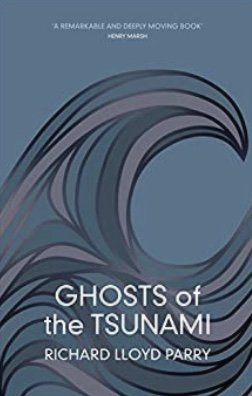Penance by Kanae Minato, translated by Philip Gabriel (Mulholland Books)
Kanae Minato may be the queen of Japan’s psychological thriller. She is the author of the award winning novel Confession, titled Kokuhaku in Japanese. Penance is her third novel and is her second to be translated into English. It was originally published in Japan in 2012 with the title of Shokuzai which is often translated as atonement. However, in this novel, penance is the more appropriate term. It was translated from the Japanese by Philip Gabriel who is a professor of Japanese literature in the Department of East Asian Studies at the University of Arizona. He has also translated short stories and novels by Haruku Murakami.
Penance was also made into a television mini- series. It is just as disturbing as her previous novel Confession. It is the story of five childhood friends. One summer during the Obon holidays while the girls are playing on the school grounds, they are approached by a man. Soon, one of the girls is dead and the man has disappeared. Unfortunately, for the grieving mother and the police, not one of the girls can remember the face of the man and he was never caught.
At the time of the incident, the young girls were only ten years old. Their names are Sae, Maki, Akiko, Yuko, and Emily. Except for Emily, the girls grew up together in a small rural town. The only thing the town was known for was having the cleanest air in Japan. And because of this, Adachi Manufacturing decided to build a factory there to make their precision instruments. Heading the factory was Emily’s father.
Three years later, the police still have no leads and the killer is still on the loose. Asako, Emily’s mother, asks the girls, who are now thirteen, to come to her house. She tells the four girls that if they can’t find the murderer, then they should atone for their crimes in a way that will satisfy her. If they don’t, Asako said she will take her revenge on each and every one of them.
Emily’s mother moves back to Tokyo and the four girls get on with their lives and gradually forget about the threat Asako made against them. The statute of limitations for the crime against her daughter is about to take effect (although this law has been amended in Japan in 2010 for capital offenses) and the death of her daughter remains a mystery. Fifteen years later, Asako’s threat comes back to haunt all four of them.
Kanae Minato’s novels are dark and chilling. They also make you think. If you were as young as they were when one of your friends was killed, what would you do? Would you be able to take charge like Maki who gave her friends directions before seeking help as well? Would you have been able to go to the police like Yuka? Would you be able to sit near a dead body on your own like Sae? Would you have handled informing Emily’s mother more tactfully than Akiko when Emily’s mother asks her where Emily is only to be told, “She’s dead”? If you know the killer is still on the loose and has seen your face, would you live in constant fear until he is caught?
And of course the biggest question remains. Will the killer be caught before the case reaches its statute of limitations? ~Ernie Hoyt



















